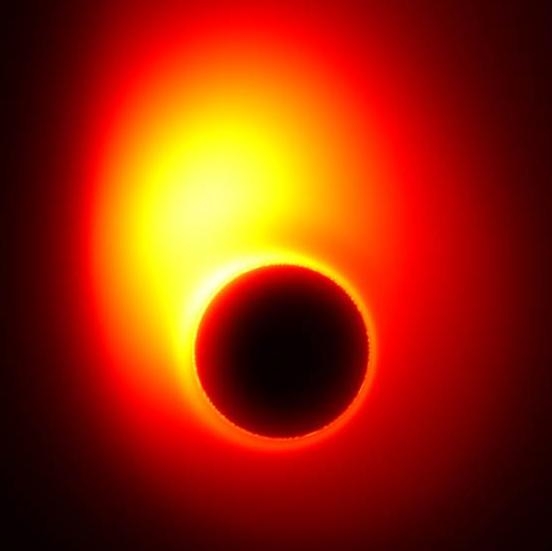
If you want to see a black hole tonight,
just look in the direction of Sagittarius, the constellation.
That’s the center of the Milky Way Galaxy
and there’s a raging black hole at the very center of that constellation
that holds the galaxy together.
— Michio Kaku
Of all the objects in the Universe, black holes can be considered the most fascinating and mystifying. Enchanting scientists and science-fiction writers alike for decades, they comprise the ultimate cosmic paradox: objects that have an infinite density occupying a zero volume, from where nothing, not even light, can escape and all known laws of physics break down. Now, scientists aim to directly observe the boundary of a black hole itself for the first time, called the event horizon, as part of an ambitious international project called The Event Horizon Telescope.
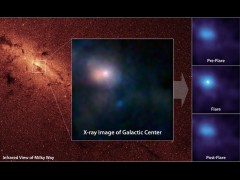
Although first theorised by British natural philosopher John Michell and French mathematician Pierre-Simon de Laplace during the 18th century, the objects that would be later called “black holes” by American physicist John Wheeler came into the spotlight by Albert Einstein’s General Theory of Relativity in 1915. One of the revolutionary underlying notions of Einstein’s theory was that matter curves space-time—the fabric of the Universe itself. The higher the mass (thus gravity) of an object, the bigger the curvature of space around it will be. Subsequent solutions to Einstein’s equations showed that around objects with a sufficiently strong gravitational field the curvature of space-time would become infinite, where the escape velocity would be greater than the speed of light, consequently rendering these objects invisible to outside observers. The area of space-time where escape velocity equals that of light would essentially mark the limit of the black hole’s radius, beyond which anything falling inward would be on a one-way trip toward oblivion. This area is known as the event horizon.
One of the best places to look for these objects is located approximately 26,000 light-years from Earth, at the direction of the Sagittarius constellation. Detailed observations with ground-based telescopes during the last 20 years have shown that a bright radio source called Sagittarius A*, or Sgr A* for short, lying at the center of our galaxy, is indeed a supermassive black hole with a mass 4 million times that of the Sun, occupying a volume of space with a radius of no more than 44 million km, slightly less than the aphelion of Mercury’s orbit around the Sun.
Astronomers study celestial objects by collecting and analysing the light they emit. Black holes, due to their nature, cannot be studied directly, making any observations of these objects a really painstaking process. Yet because of their immense masses, their presence can be detected by the gravitational forces they exert on their surroundings. In the case of Sgr A*, the presence of the supermassive black hole at the center of the Milky Way was confirmed in recent years by observations of dozens of stars revolving around an invisible and very massive point source, with their orbital velocities exceeding 5,000 km/s, or 1.67 percent the speed of light. Additional observations from NASA’s Chandra X-Ray Observatory have captured images in great detail of the disk of material swirling around the central black hole before falling inward. This material is heated to millions of degrees through friction forces while brightly emitting radiation across the whole electromagnetic spectrum in the process. From these Chandra observations, astronomers have deduced that the behavior of Sgr A*, despite being relatively mild at present, closely resembles that of supermassive black holes at the centers of other galaxies.
General relativity predicts that the shadow of a black hole should be circular (middle image), but a black hole that violates General Relativity could have a prolate (left) or oblate (right) shadow. Future EHT images of nearby supermassive black holes will be able to test this prediction. Images Credit/Caption: D. Psaltis and A. Broderick/Event Horizon Telescope project
Although the environment around Sgr A* has been studied extensively for decades, astronomers have never been able to observe the immediate surroundings of its event horizon, the boundary of space-time that separates the central black hole from the rest of the Universe. Doing so would give them the chance to witness the effects of extreme physics first-hand, while also giving Einstein’s theory of General Relativity the ultimate test. “Today, Einstein is in every iPhone, because the GPS system would not work without his theory,” says Leo Meyer, a researcher of the Galactic Center Group, a team of scientists from the University of California in Los Angeles, studying the innermost regions of our Milky Way galaxy. “What we want to find out is, would your phone also work so close to a black hole?”
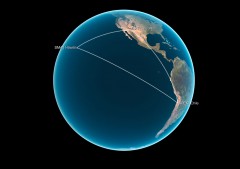
This is the ambitious goal of The Event Horizon Telescope, or EHT, a joint international project that aims to image the event horizon around Sgr A* for the first time ever. To that end, the collaborating teams of scientists will use a technique called Very Long Baseline Interferometry, or VLBI, to link together multiple radio telescopes that are located in different parts of the planet, creating a single large virtual radio telescope with a size as big as the greatest distance between the array’s individual elements. The ultimate aim of the EHT project is to create an array the size of the whole Earth. That would give scientists an angular resolution comparable to the size of the event horizon in Sgr A*. “The Schwarzschild radius [event horizon] for Sgr A* is 10 microarcseconds, an exceedingly small size even by astronomical standards”, states The Event Horizon Telescope’s team at the project’s website. “EHT observations to date have achieved a resolution of better than 60 microarcseconds — about the angular size of an orange on the Moon. We are working to include other millimeter telescopes into the EHT array in order to improve the resolution of the EHT and eventually be able to produce images of the black holes in Sgr A*, M87, and other sources.”
To date, the project has linked-up various radio telescope observatories in the continental U.S., Hawaii, Europe, Japan, and Chile. A big boost to EHT’s resolution is expected with the addition of the 66 dishes that comprise the recently completed Atacama Large Millimeter/sub-millimeter Array, or ALMA, in Chile and the 10-m diameter South Pole Telescope, located at the U.S. Amundsen–Scott South Pole Station in Antarctica. This increase in resolution will make the study of the event horizon in Sgr A* possible. As noted by the EHTs science team: “We have obtained detections to date on baselines between Hawaii, California and Arizona, with an angular resolution corresponding to 6 Schwarzschild radii for Sgr A*. ALMA will double this angular resolution.”
One of the primary science goals of the EHT is to test Einstein’s General Theory of Relativity. Although its validity has been showcased time and again in countless experimental tests since the theory’s inception a century ago, it has never been tested near very high gravity fields like those around black holes. For instance, one key prediction of Relativity is that the “shadow” of a black hole (the shape of the event horizon) is circular. By observing the accretion of matter in the immediate surroundings of the event horizon in Sgr A*, astronomers will be able to observe the “shadow” of the horizon itself. If the shape turns out to be anything but circular, it would mean that Relativity fails near extreme gravity fields and that another theory of gravitation is necessary.
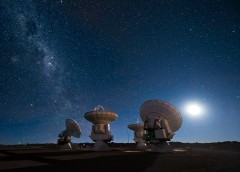
“While most astrophysicists believe black holes exists, nobody has actually ever seen one,” says Dr. Heino Falcke, Professor of Astroparticle Physics and Radio Astronomy at the Radboud University’s Department of Astronomy in Nijmegen, Netherlands, and member of the BlackHoleCam team, a European team of scientists participating in the EHT project. “The technology is now advanced enough that we can actually image black holes and check if they truly exist as predicted: If there is no event horizon, there are no black holes.”
“We can now calculate very precisely how space and time are warped by the immense gravitational fields of a black hole, and determine how light and matter propagate around black holes,” adds Dr. Luciano Rezzolla, the Chair of Theoretical Astrophysics at the Institute for Theoretical Physics of the University of Frankfurt, Germany and co-member of the BlackHoleCam team. “Einstein’s theory of General Relativity is the best theory of gravity we know, but it is not the only one. We will use these observations to find out if black holes, one of the most cherished astrophysical objects, exist or not. Finally, we have the opportunity to test gravity in a regime that until recently belonged to the realm of science fiction; it will be a turning point in modern science.”
The EHT’s science team hopes to produce the first images of the event horizon around Sgr A* by 2022. In doing so, the project must incorporate many novel techniques for combining and synchronizing the signals received from the many different radio telescopes of the array and overcoming the limitations of conducting observations from the ground, at the millimetre and submillimetre wavelengths of the radio spectrum. These wavelengths which the EHT will operate in are characterised by heavy atmospheric water vapour absorption, hindering the observing ability of radio telescopes, which will be able to observe only through specific “windows” at these wavelengths. “Water vapor in the atmosphere absorbs radiation from cosmic sources and causes the sky to appear brighter, leading to loss of sensitivity,” writes the EHT team. “Fluctuations in tropospheric water vapor also cause rapid phase variations that lead to decoherence. Both of these effects increase with observing frequency.”
Despite these challenges, the increase of the EHT’s sensitivity with the addition of more radio observatories in the future, and the use of digital electronic receivers instead of the analogue ones that are used today, will help to mitigate the effects of these atmospheric disturbances, while increasing the angular resolution of the array at the same time. This way, astronomers will be able to conduct observations in even shorter wavelengths in the coming years, from the 1.3 mm currently observed to 0.87 mm. “This will effectively increase the resolution of the EHT by a factor of 1.5, providing a resolution as small as 1.5 Schwarzschild radii for Sgr A*,” states the EHT team.
Black holes and the event horizons around them have been portrayed in countless science fiction stories on cinema and television, with a widely varying degree of realism and scientific accuracy. In the near future, filmmakers and producers might be able to be more accurate in their stories and depictions of these fascinating cosmic objects by using the actual black hole images that will be obtained with the Event Horizon Telescope.
Video Credit: European Southern Observatory
Want to keep up-to-date with all things space? Be sure to “Like” AmericaSpace on Facebook and follow us on Twitter: @AmericaSpace




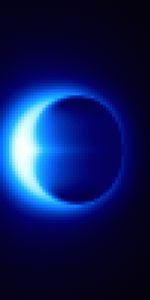
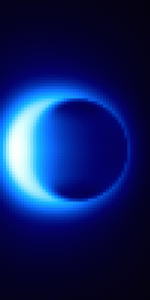
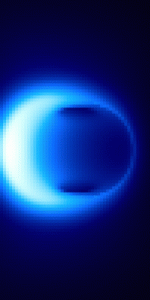
“orbital velocities exceeding 5,000 km/s, or 1.67 percent the speed of light”
Is this not a violation of Special Relativity? Or a typo perhaps?
Hello Bill,
Actually no, it’s not a violation of general relativity. The observed velocities of 5,000km/sec are actually just 1.67% that of the speed of light, which aren’t as high, for astronomical objects, as they might seem. For instance, astronomers have observed gas and dust expelled from gamma ray bursts, travelling at more than 99.9% the speed of light!
The high speeds with which the stars revolve around Sagittarius A* at the center of the Milky Way, coupled with measurements of their mass, have helped astronomers to infer the presence of the supermassive black hole that lies there.
Every time I see the name Michio Kaku I become ill. This is the man who went out of his way to try to stop the most successful space mission ever, the Cassini mission to Saturn. He formed a group of wackos to protest the fact that Cassini used nuclear power. Many times on television I see Kaku appear on science programs. Maybe they do not know the history of this petty little man. If they did, they would never use him.
Actually Mack, I was unaware of Kaku’s protests against the Cassini launch, thanks for updating me on that. Yes, I agree, it’s really sad to see prominent scientists go into actions like these. Had I known, I’d probably have used another intro for the article.
Embarrassing, my mind heard 1.67 *times*. I will be more careful. Crawling back to my hole now.
No need to feel embarassed Bill, really. Believe me, you’re not the only one to misread something, especially when it comes to astronomical concepts.
Thank you for your response Mr. Papadopoulos. The Cassini incident happened 17 years ago but I still remember it well. I have had trouble moving on from that when I see Kaku all over the History channel and other like it commenting on astronomy. My problem with Mr. Kaku in no way relects on your excellent work.
I really appreciate your kind comments, Mack. Thank you.